How to Survive Almost Anything
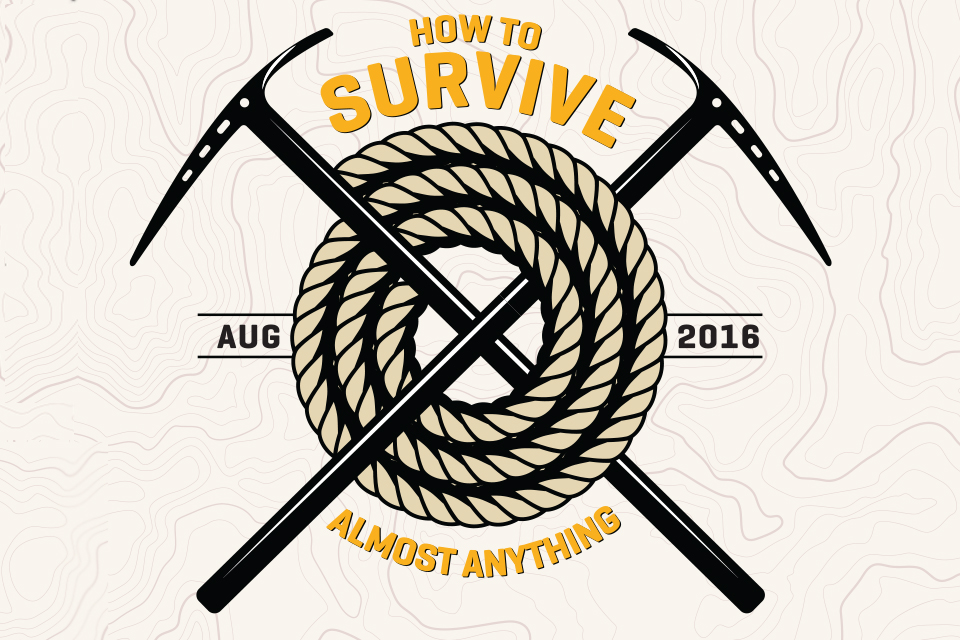
Expert guidance to thrive in the wilderness, urban catastrophies, and self-defense.
Wilderness
The Experts
Jeff Walters, outdoor enthusiast and survival instructor at REI
Jason Brooks, U.S. Marine veteran and former backcountry ranger at Rocky Mountain National Park
The Seven Ps
You can greatly increase your chances for survival before you even set foot outdoors. “I tell everyone to remember ‘The Seven Ps’: proper prior planning prevents piss-poor performance,” says Walters. Research all of the details for your trip and devise a plan. This includes looking at where you’ll be, when you’ll be there, the weather highs and lows, packing for activities, having enough water and food, and a backup plan in case anything goes awry.
Weather
After you’ve decided where and when you’re going camping, backpacking, or exploring, check the weather. This will dictate the kind of clothing you’ll pack for your trip. If you plan to go somewhere like Big Bend, where summer temperatures reach 100 degrees, it may seem counterintuitive to wear long sleeves in the Texas heat, but it’s actually your best line of defense against a brutal sunburn. Dress in moisture-wicking, quick-dry material and plan your hikes for the morning or evening.
Weather preparation is key because the No. 1 killer in survival situations is exposure, which leads to hypothermia or hyperthermia.
Lost and Found
“If you really want to prevent yourself from getting lost, learn map and compass navigation,” says Brooks. Google Maps won’t always pull through for you in tough times, so it’s best to rely on the old-fashioned methods. (Classes available at REI.)
Before you embark on a hike or backpacking excursion, tell a friend where and when you’re going. If you don’t make it back in time, that person can call the park rangers and assist in guiding them to your rescue. Brooks also recommends leaving a note on the dashboard of your car with information detailing where you’re going, what your plan is, and when you expect to return.
And if you have absolutely no navigation skills or resources, and you’re lost in the woods, stay put. Don’t wander. This will also help authorities find you faster. However if water is in sight, make your way over to it. Following water in the direction it’s flowing will likely lead to more water and/or civilization.
The Rule of Threes
Even if you don’t remember any survival skills, learning the “rule of threes” could be the most crucial piece of knowledge you take with you. Generally, we can survive:
-3 minutes without oxygen
-3 hours in extreme weather
-3 days without water
-3 weeks without food
“Note that the ‘rule of threes’ is a guideline. For instance, the ‘three days without water’ rule can actually be dropped down to two or one day in the Texas heat,” says Walters.
Keep reading for more wilderness survival skills!
Hydration
Water is the source of life, but only if it’s clean. A basic rule when finding water is to remember that the faster it flows, the cleaner it is. If you find a fairly clear water source, filter and purify it before drinking, just to be safe.
What’s the difference?
Filtration is the removal of particulates.
To filter water, run it through a bandana. It’ll make your water cleaner, but it doesn’t stop harmful bacteria or protozoa. Purification is the elimination of harmful bacteria. This can be done in three ways:
1. Heat
-One minute of boiling.
2. Chemical
-Iodine treatments
Not recommended for anyone with thyroid issues or shellfish allergies.
-Chlorine Dioxide tablets
Individually wrapped
3. Ultraviolet
-SteriPen
Doesn’t just come in handy in a survival situation—also good for when you’re unsure about the drinking water while traveling out of the country.
-Sunlight
Put water in a Ziplock bag or clear bottle; leave it in the sun for six to eight hours to purify. Must be clear water or pre-filtered.
Plants
Many stick to the familiar axiom “leaves of three, let it be” when trying to avoid poison ivy. Even if you’re unsure, stay away.
Snakes
You may know the common snake identification poem:
Red touching yellow, kills a fellow
Red touching black, friend of jack
But Walters has different advice: “Just don’t mess with snakes. Always err on the side of caution by staying away. A snake bite—regardless of whether it’s venomous, non-venomous, or you’re unsure—can completely throw you off in a survival situation. Your heart rate can increase, you shift into fight-or-flight mode, then you start burning calories that deplete your energy.”
Bodies of Water
You may think you’re a strong swimmer, but swift water and open bodies of water can be a challenge for anyone. “Never try to rescue a drowning victim because they’ll grab you,” says Brooks. A drowning person will already be in a panic, and instinctively clutch to anything they can—even you.
Check out the next page to learn how to start a fire!
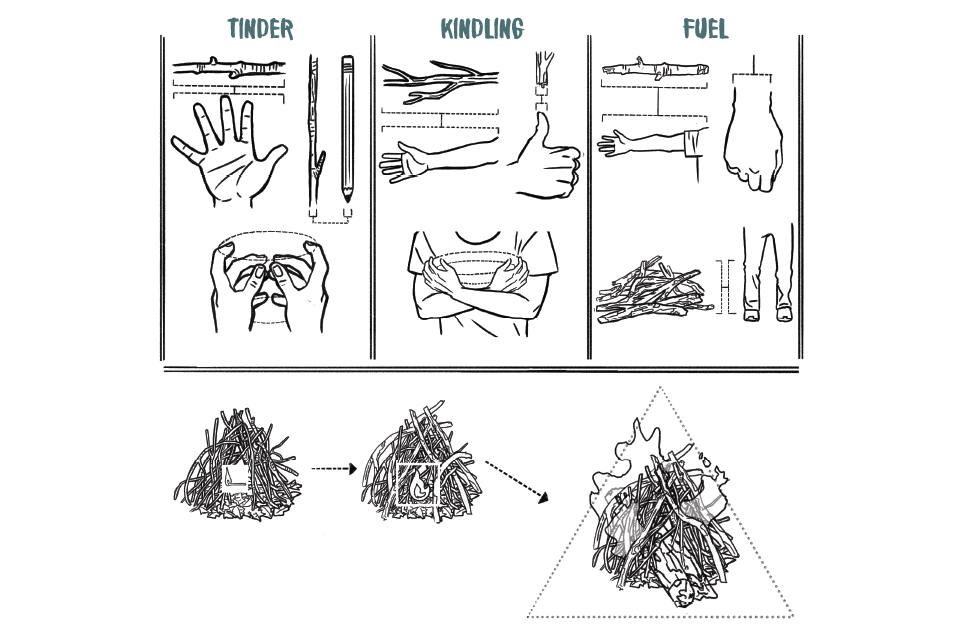
ILLUSTRATION BY EDGAR VEGA
The Fire Triangle
Teepee Method
1. Combustion
2. Oxygen
3. Fuel
Start with sticks about the size of pencil lead, and then build your way up.
Juniper bark is the best source of tinder in this area.
Collect sticks that are dry. Make sure they have a crisp snap when you break them.
Look for wood that’s dead but still vertical (hanging or leaning). If you pull off a branch from a tree, and it’s got green in it, that’s an indication of moisture. Moisture is an inconvenience when trying to start a fire.
Continue reading to learn about urban survival!
Urban
The Experts
Thomas Amador, REI instructor, “Prep for the Unexpected” class
Mylo Villanueva, U.S. Marine Corps veteran and owner of MYLO Obstacle Fitness
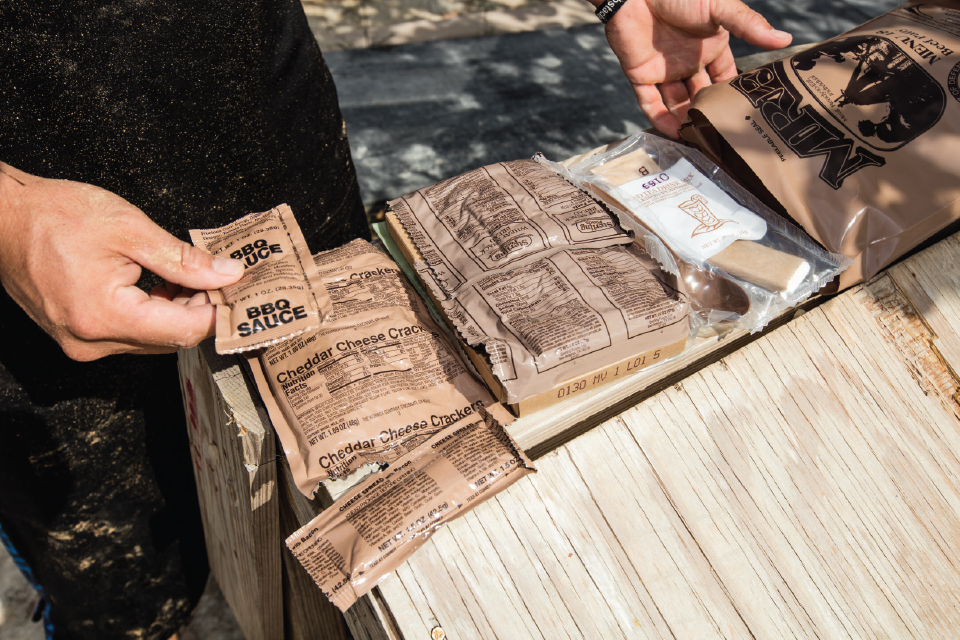
PHOTOGRAPHY BY BRIAN FITZSIMMONS
Prepare for the Worst
“Being prepared is a life skill just like cooking is a life skill, and it’s a mindset–not a lifestyle,” says Amador. The process of getting ready for any situation is three-fold:
1. Plan: Figure out your needs.
2. Prepare: Acquire training and materials.
3. Practice: A run-through of your plan is the most important step because it helps you to avoid falling into default mode when you’re feeling panicked. Poet: Kahlil Gibran put it best when he said, “A little knowledge that acts is worth infinitely more than much knowledge that is idle.”
Having everything ready in case of emergency will help dissipate fear. In the midst of chaos and disaster, trepidation can end up being more threatening than the situation itself. “Fear causes more pain, injury, and suffering than anything else in this world. It’s not about ignoring the fear, it’s about understanding and controlling it,” says Villanueva.
The Bystander Effect
When disaster strikes, it’s imperative to take action immediately and not fall victim to the bystander effect. Unprepared people tend to follow whoever seems to know what they are doing. This causes a shift in personal responsibility. Those who follow the herd risk being misled into an even worse situation, especially in emergencies or natural disasters.
Stock Up
Keep five gallon jugs of water in your emergency storage. Another way to ensure you and your family have enough water is to allot one gallon per day per person. Don’t forget about setting aside food and water for pets, too.
Many U.S. Marines will suggest buying military MREs (Meals, Ready-to-Eat) and stocking up, due to their long shelf life, high calorie count, and compact packaging.
Villanueva also says to invest in a generator: “Electricity will be the first thing to go out. It could take anywhere from 24 hours to days and weeks for them to get it back up and running, so having a backup generator always helps.”
Want to learn how to throw a spear? Click here to watch a video!
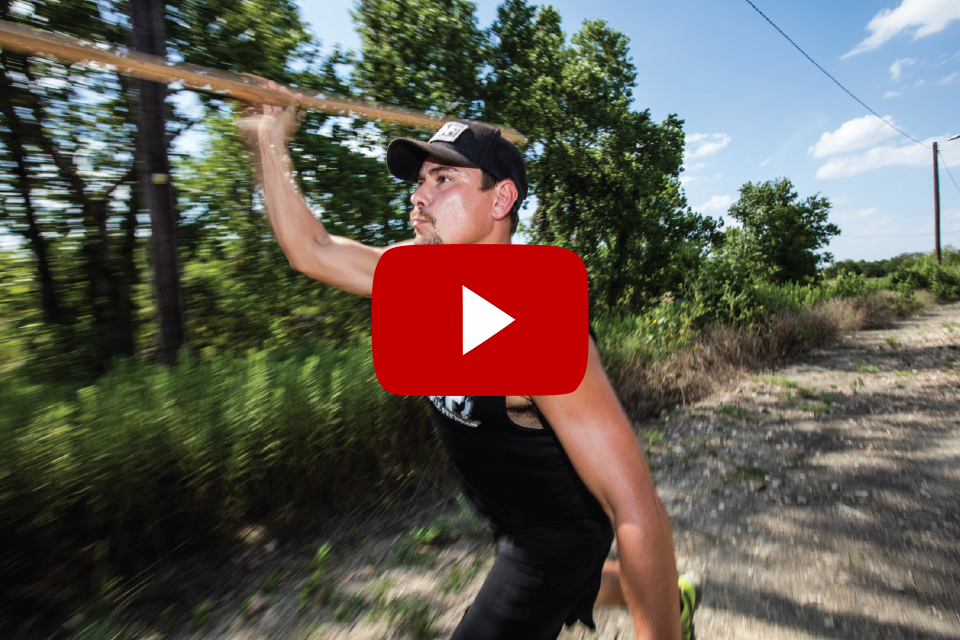
MYLO VILLANUEVA DOING A SPEAR THROW ON HIS OBSTACLE COURSE
PHOTOGRAPY BY BRIAN FITZSIMMONS
Keep reading to learn what to do in an urban disaster.
When Disaster Strikes
Food
Eat food that spoils first, and then immediately put the rest in the freezer.
Use canned goods but mix it up so your digestive system can run normally. Keep in mind: Food in a “No. 10” can last up to 25 years in room temperature and freeze-dried foods last a decade.
Water
“A lot of people don’t know this, but say you didn’t stock up, and the water is all gone, and a flood hits. When the sewage is backed up all over the place, and it’s nasty, there are a couple of things you can do. Inside the toilet—not the bowl but the tank—there is clean, fresh water. If the water tap hasn’t been damaged, then fill up your bathtub, and you’ll have that much water to drink,” says Villanueva. Additionally, Amador recommends filling up all cups and large glasses while you’re at it.
Shelter
Shelter is your ultimate priority in any survival situation. Amador recommends camping as a great way to prepare and practice for a situation in which you may have to forge ahead in the outdoors.
Stay Warm
In colder weather, if the electricity goes out, warm up by staying in the room facing the sun. If you’re stuck outside in the cold, opt for wool clothing over cotton. “Cotton soaks up moisture, and that’ll lower your body temperature,” says Amador.
Protect Yourself
Looting—and criminal behavior in general—is a common pattern in the wake of disaster. For example, after Hurricane Katrina, crime rates skyrocketed. Even Hurricane Sandy saw an immediate increase in robberies. That’s why Villanueva suggests staying tight-lipped about your emergency supply.
Self-defense, in any form, is another way to gain an advantage. “If you have a generator and all these supplies, and you don’t know how to defend yourself, then you’re basically just storing it for the toughest kid on the block. If someone comes in, even if you have a weapon but you don’t know how to use it, what good is it?” says Villanueva.
Floods
Austin isn’t on an active fault line, nor does it rest in Tornado Alley, but we certainly have seen our fair share of flooding. Tubing down the rapids of the greenbelt may sound like fun, but swift-water survival is extremely difficult.
During a flood, we hear an influx of first responders saying, “turn around, don’t drown” for a reason! Low-water crossings are the most dangerous spots. If you ever see a flood gauge, be warned, and don’t even try to cross it. In Travis County, there are 130 rain or creek-level gauges.
When people try to cross them, cars get swept away. And worst case scenario: Your car gets swept away, hits a rock, flips over, and then fills with water.
According to the City of Austin, about 75 percent of flood-related deaths in Texas occur in vehicles.
Sanitation and Medical
When you can’t call a doctor, your first-aid kit can be a literal lifesaver. The equipment needed for this is a bit extensive because it covers cleanliness and medical needs:
-Hand sanitizer
-Prescription medications (bring extra)
-Cat litter (for when the toilet doesn’t work)
-Trash bags
-Family-sized first-aid kit
-Medical masks
-Extra gloves
Do you know how to climb a wall? Keep reading to find out.
Want to learn how to scale an 8 ft wall? Click here to watch a video!
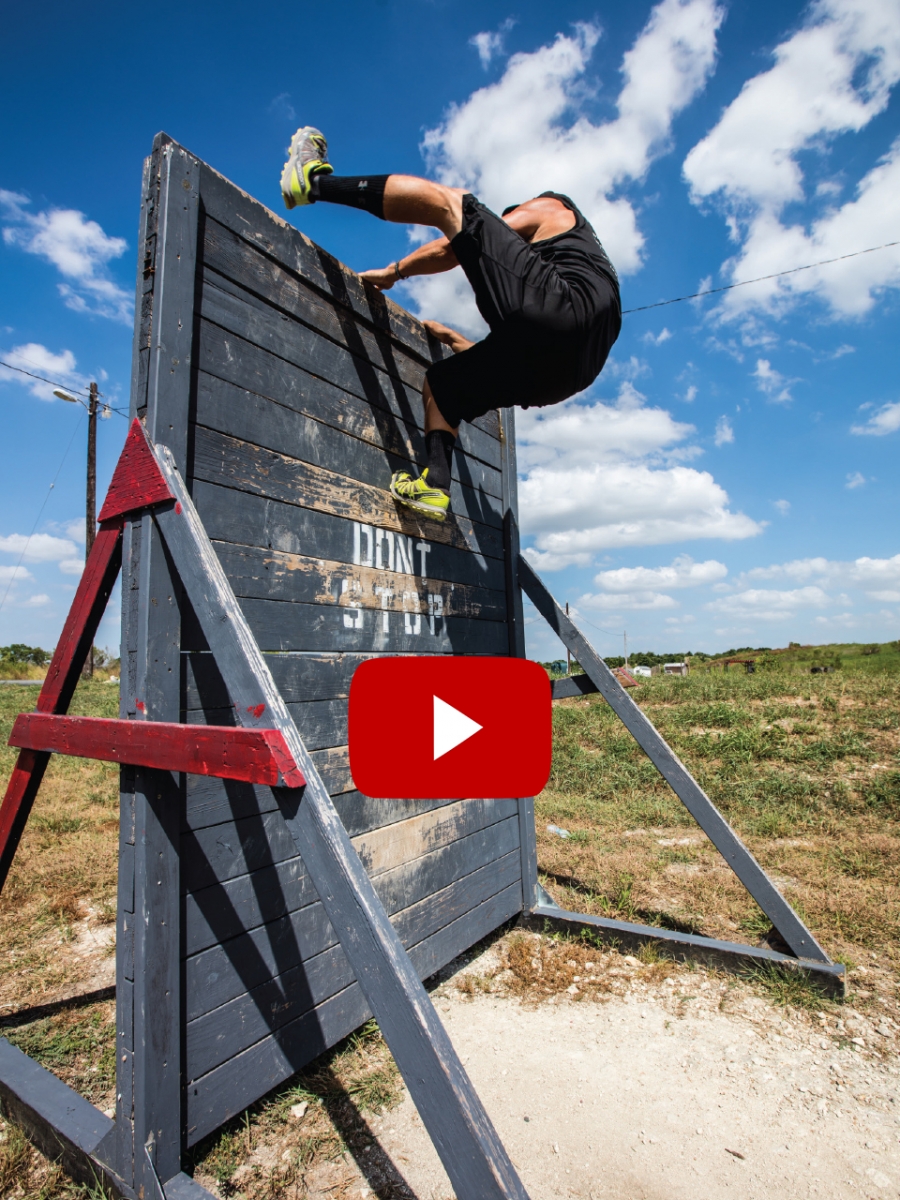
MYLO VILLANUEVA CLIMBS A WALL ON HIS OBSTACLE COURSE
PHOTOGRAPY BY BRIAN FITZSIMMONS
Need step by step instructions? Keep reading for more wall climbing tips!
How to Climb a Wall
Nature can be a mighty foe, but it’s not the only thing that can threaten your survival. In urban situations, knowing how to scale a wall can be handy if you’re running from a rabid animal or an assailant.
Directions:
Run toward the wall at your normal pace. Do not stutter step as you approach.
As you launch off the ground, place one foot on the wall and use it (plus your momentum) as a push to boost your body upward.
Grip the top of the wall.
While still holding on, walk your feet up the wall. Keep your feet flat against the wall, arms straight, and butt sticking out.
Once your feet are close enough to the top of the wall, latch your foot over the edge. Pull in, and push down on your ankle to hoist the rest of your body over.
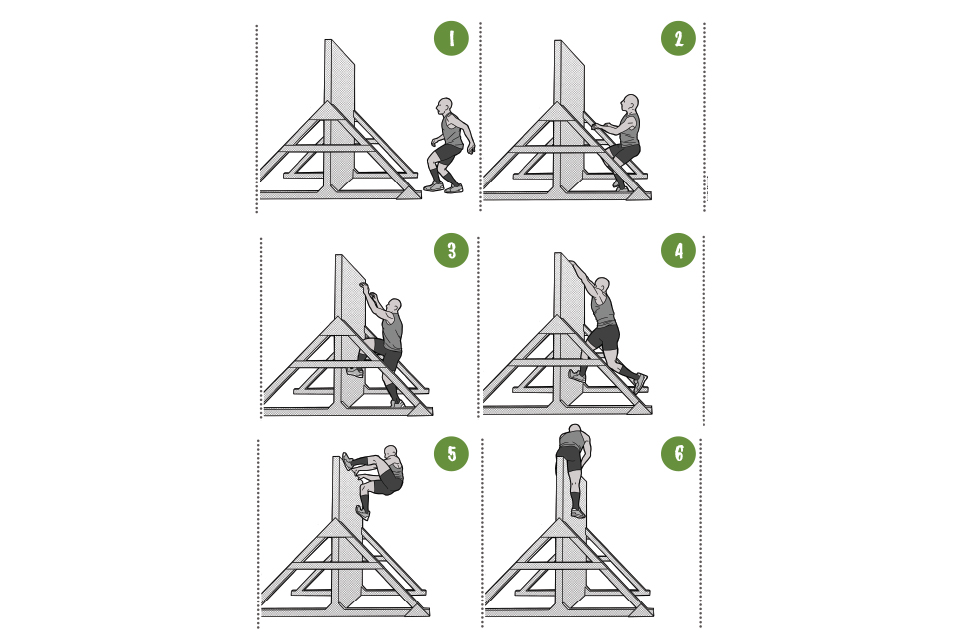
ILLUSTRATION BY EDGAR VEGA
Keep reading for lessons in self-defense!
Thrill of the Fight
Plan of action? Check. Emergency kit? Check. Self-defense skill set? Be prepared to face off against others when you absolutely have to.
By Devaney Devoe & Devyn Bernal
It may be difficult to imagine getting attacked in your own city, but incidents happen every day. Assaults can occur without hesitation or warning, and come from an individual or a group, by someone familiar or a complete stranger. Austin Police Department records revealed that of the 119,556 crimes committed in Austin last year, 1,910 of those were aggravated assaults. We have to face the harsh reality; anyone could be a victim, even you.
Self-defense can prepare you for those unexpected situations and help increase mental and physical health. Although martial arts and self-defense are not one in the same, many studios stress the self-defense components in each form of training. Learn how to harness your physical power, increase your confidence, and be ready for anything.
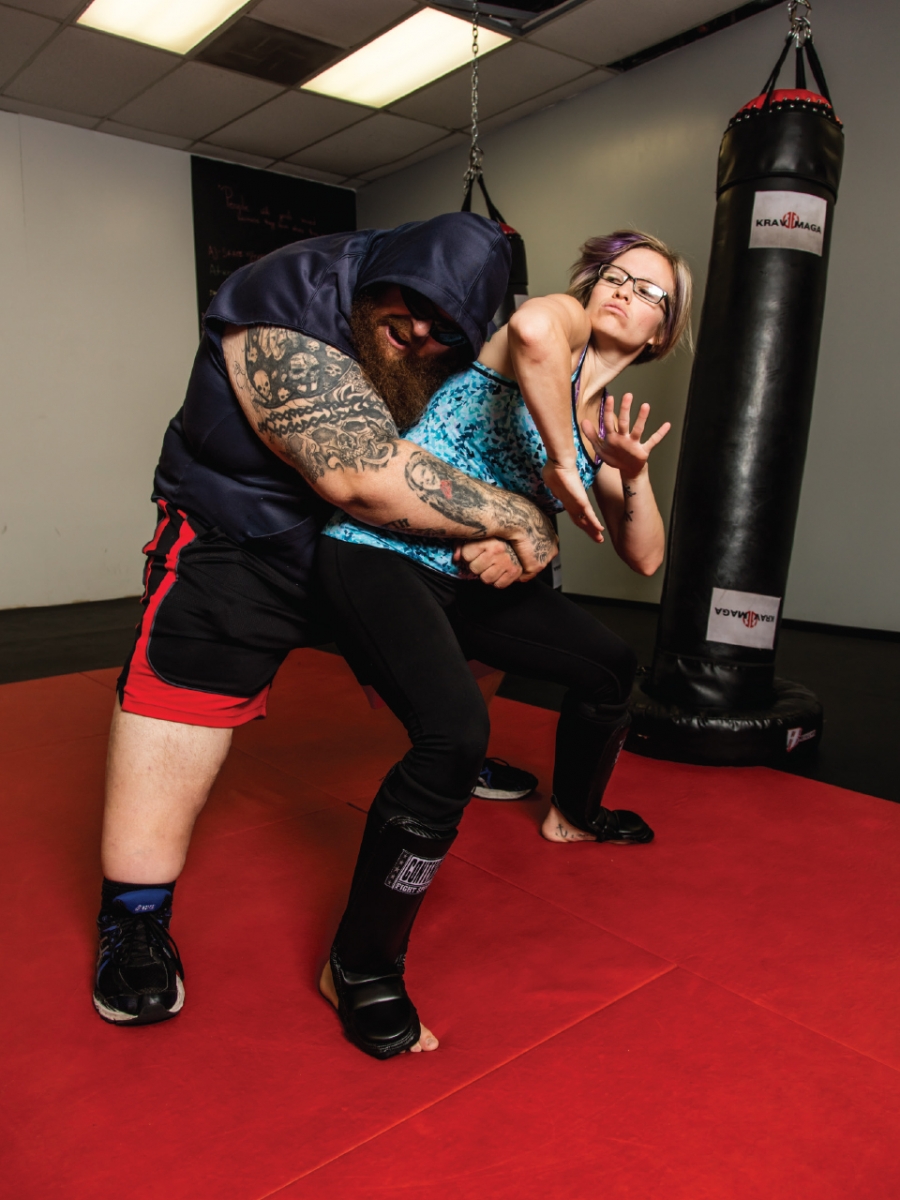
FIT AND FEARLESS
PHOTOGRAPHY BY BRIAN FITZSIMMONS
Krav Maga
Krav Maga is a self-defense system that’s more commonly found in the streets rather than in a sporting or competitive aspect. This hybrid of boxing, Brazilian jiu-jitsu, and Muay Thai teaches you how to use your body as a weapon, defend yourself, and prevent vulnerability before it causes harm. Created nearly 80 years ago in Israel by Imi Lichtenfield, this system has proven effective by the civilians who learn and teach it. The Krav Maga practice differs from traditional martial arts because it is reality-based and characterized by coherent and logical techniques that build up naturally. Simple body movements make up this self-defense system, creating an easy application to a variety of attack scenarios. Krav Maga is fitting for those who want to learn how to defend themselves because the main elements are easily retained and can be performed in the most stressful of situations. Plus, over time, practicing this defensive program mentally empowers its students and provides strength and confidence in every aspect of life.
Want more self-defense? Keep reading!
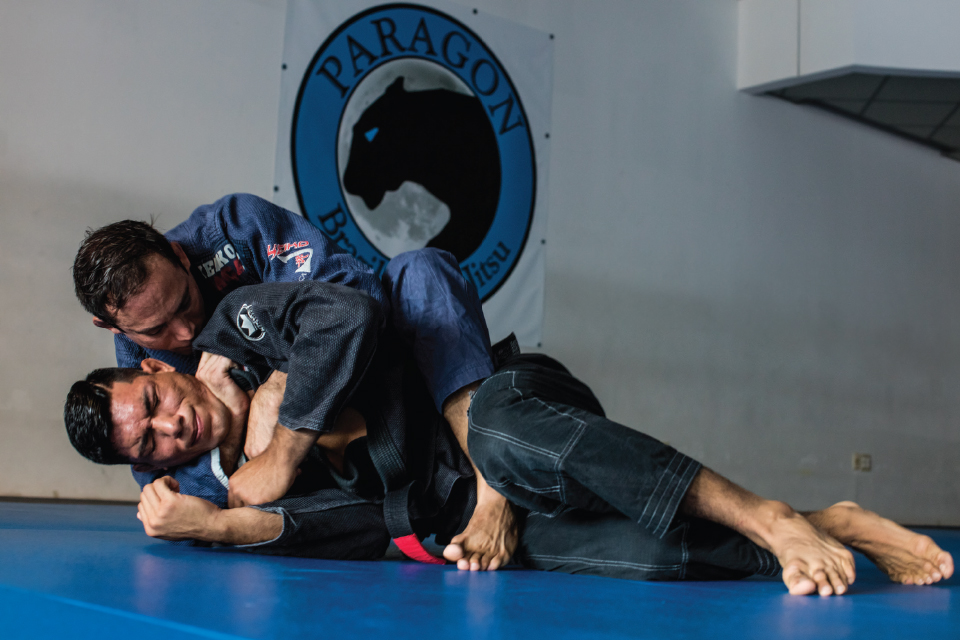
PARAGON BRAZILIAN JIU-JITSU
PHOTOGRAPHY BY BRIAN FITZSIMMONS
Brazilian Jiu-Jitsu
Jiu-jitsu specializes in ground fighting rather than in a standing position, and is used in sport as well as self-defense. As a descendant of Japanese Judo with an added Brazilian flair, this century-old practice emphasizes using technique and leverage to gain a dominant position and finish the opponent into submission. Over time, pioneers such as Luiz França, Oswaldo Fadda, and Carlos and Hélio Gracie refined the Judo teachings by implementing chokes, strangles, and joint-locks, making Jiu Jitsu in to the practice it is today. Training in Brazilian jiu-jitsu can improve cardiovascular fitness, strength, mobility, and flexibility. Even for a person of smaller stature or less strength, jiu-jitsu educates students on how to defend, control, and defeat a larger, stronger opponent.
You can also use the lessons you learn on the mat and apply them to your daily life, like the ability to problem solve under duress, or focus on self-awareness. Jiu-jitsu uses a belt ranking system that signifies a student’s progression in the art, and represents a student’s technical knowledge, as well as the ability to execute techniques in a live setting.
Want more self-defense? Keep reading!
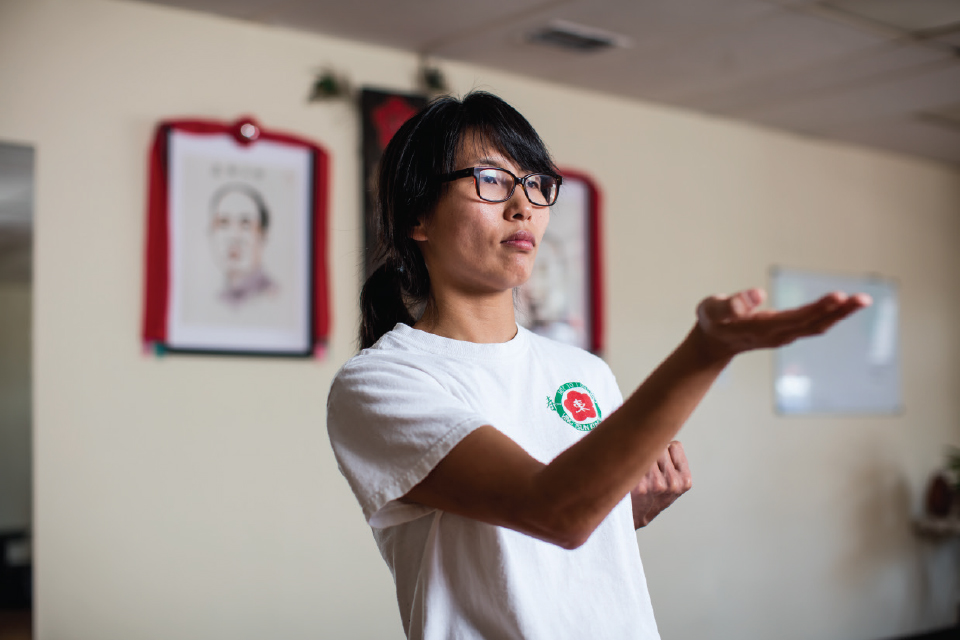
MOY YAT KUNG FU ACADEMY
PHOTOGRAPHY BY BRIAN FITZSIMMONS
Ving Tsun Kung Fu
The literal translation of Kung Fu is “hard work” or “skill” in Chinese and Ving Tsun is the boxing style of this martial art. The practice specializes in efficient movement in close-up combat, simultaneous attack and defense, and the power of good centerline structure over brute strength.
Legend has it that the origin of Kung Fu started when a young Chinese woman named Ving Tsun had to fight a local bandit and win, or be forced to marry him. A nun by the name of Ng Moy wanted to help Ving Tsun, so she trained the woman in a martial art style that would allow her to defeat a big, scary bandit in a fight, despite her small size. And thus, Ving Tsun Kung Fu was born.
One of the most key benefits to this traditional martial art is self-confidence. If you can get through hours of Kung Fu training every week, if you can get hit and keep going, if you can try and fail and try again until you get a technique right, chances are, there really isn’t much that can intimidate you. Since Ving Tsun was originally designed for a smaller person to defend against a larger attacker, it’s an excellent system for women to learn for self-defense. The mental component of Ving Tsun demands a great amount of patience and calmness; a student uses controlled energy and relaxation at all times, even in the middle of a fight.
Thank you to the martial art experts at Fit and Fearless (Krav Maga), Paragon Brazilian Jiu-Jitsu, and Moy Yat Kung Fu Academy.
Do you know hot to tie a bowline knot with one hand? Learn how on the next page.
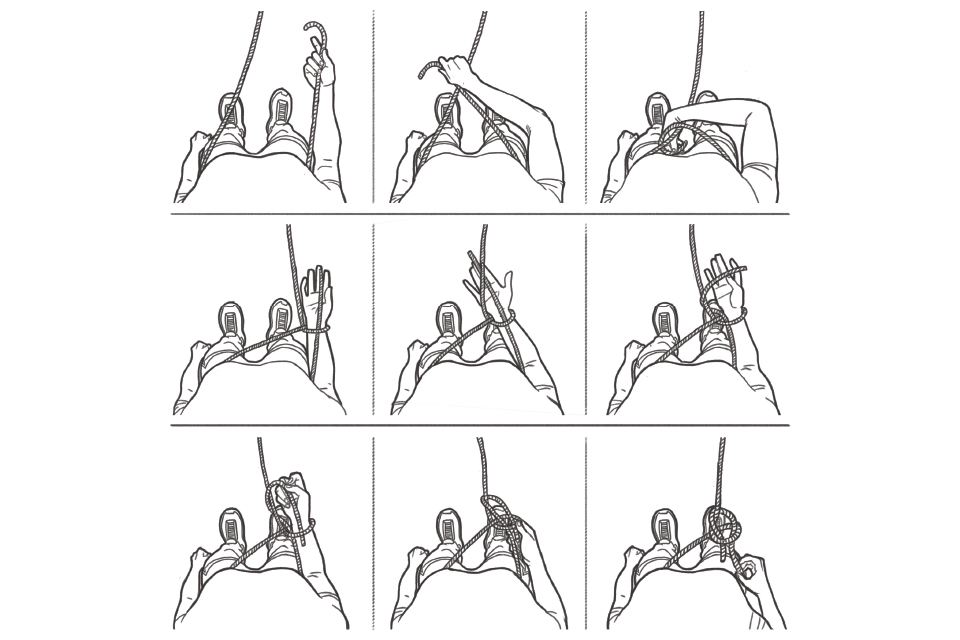
ILLUSTRATION BY EDGAR VEGA
How to Tie a One-Handed Bowline Knot
Also known as the rescue knot, this method creates a secure tie that can be lifesaving in rescue situations on land and water. The ability to do this one-handed is even more valuable in case of injury or assisting others. Aficionados of climbing, camping, and sailing are familiar with the bowline knot.
Park Ranger Recommended!
Directions:
Wrap the rope around your back and hold in front of you, leaving about six inches of slack.
Pull the rope across over the standing line, and bring inside and up through the middle.
Pass the short end around the standing end and pull it back through the loop
Keep reading for more advice from the experts.
Key Survival Advice
Each survival expert we interviewed shared a wealth of knowledge with us. Every single one of them emphasized the value of one thing in particular, though: attitude. Regardless of the situation or circumstances you’re facing, they all agreed that keeping a positive mentality was one of the keys, if not the key to survival.
“Studies have proven that people who have a positive mental attitude when disaster strikes are more likely to survive because they are in constant search of hope. When it comes to survival mode, hope comes in the form of supplies that will help you stay alive. If you constantly repeat a personal mantra of ‘I am going to survive,’ your chances of making that happen will improve.”
-Thomas Amador
“If you’re a defeatist or a negative, pessimistic person, you’re going to have a really hard time. The survival instinct is strong in every human being. Just stay calm, assess the situation, and problem solve.”
-Jason Brooks
“I carry a shemagh with me. They’re common in the military and can be used in a bunch of different ways: hood, hat, scarf, medical reasons, carrying firewood, making shelter.
But the one I carry is one my wife bought me for our first Valentine’s day. When I’m out in the woods, I’ve always got that wrapped around me. That is a constant reminder of–no matter what situation I get myself into–why I need to get myself out of it. Having something to remind you why you need to get home is another way to improve your attitude.”
-Jeff Walters
“The mentality is huge. When I get to that point where I’m lying on the floor and I feel like I don’t have an ounce of energy in me, I think of my daughter and picture her standing next to me and asking, ‘Daddy, are you gonna quit?’ and I’ll never ever tell my daughter I’m going to quit because I don’t want her to quit on herself later on in life when troubles get rough or hard. I don’t want her to think that. So I have to lead that by example and I can’t ever quit my life, so I imagine her standing right next to me and that’s what keeps me going.”
-Mylo Villanueva






